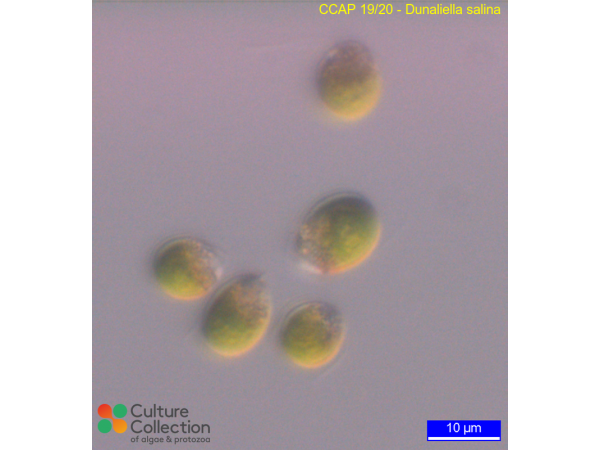References [ 6 ]
Borowitzka MA & Siva CJ (2007) The taxonomy of the genus Dunaliella (Chlorophyta, Dunaliellales) with emphasis on the marine and halophilic species. Journal of Applied Phycology 19: 567-590.
Cho K, Kim KN, Lim NL, Kim MS, Ha JC, Shin HH, Kim MK, Roh SW, Kim D & Oda T (2015) Enhanced biomass and lipid production by supplement of myo-inositol with oceanic microalgae Dunaliella salina. Biomass and Bioenergy 72: 1-7.
Emami K, Hack E, Nelson A, Brain CM, Lyne FM, Mesbahi E, Day JG & Caldwell GS (2015) Proteomic-based biotyping reveals hidden diversity within a microalgae culture collection: An example using Dunaliella. Scientific Reports 5: 10036.
Cho K, Lee CH, Ko K, Lee YJ, Kim KN, Kim MK, Chung YH, Kim D, Yeo IK & Oda T (2016) Use of phenol-induced oxidative stress acclimation to stimulate cell growth and biodiesel production by the oceanic microalga Dunaliella salina. Algal Research 17: 61-66.
Constantinescu-Aruxandei D, Vlaicu A, Marinas IC, Vintila CAN, Dimitriu L & Oancea F (2019) Effect of betaine and selenium on the growth and photosynthetic pigment production in Dunaliella salina as biostimulants Fems Microbiology Letters 366: fnz257.
Saha SK, Kazipet N & Murray P (2018) The carotogenic Dunaliella salina CCAP 19/20 produces enhanced levels of carotenoid under specific nutrients limitation BioMed Research International 2018: 7532897.
Sequences [ 2 ]
EMBL/Genbank Links
(Bold text = submission by CCAP staff or collaborators)
Division/Phylum: Chlorophyta Class: Chlorophyceae Order: Chlamydomonadales
Note: for strains where we have DNA barcodes we can be reasonably confident of identity, however for those not yet sequenced we rely on morphology
and the original identification, usually made by the depositor. Although CCAP makes every effort to ensure the correct taxonomic identity of strains, we cannot guarantee
that a strain is correctly identified at the species, genus or class levels. On this basis users are responsible for confirming the identity of the strain(s) they receive
from us on arrival before starting experiments.
For strain taxonomy we generally use AlgaeBase for algae and
Adl et al. (2019) for protists.
| Attributes |
| Authority | (Dunal) Teodoresco 1905 |
| Isolator | unknown (pre 1978) |
| Axenicity Status |
Bacteria and fungi present |
| Environment |
Marine |
| GMO |
No |
| In Scope of Nagoya Protocol |
No |
| ABS Note |
Collected pre Nagoya Protocol. No known Nagoya Protocol restrictions for this strain. |
| Collection Date |
pre 1978 |
| Original Designation |
11 Scripps-Volcani |
| Pathogen |
Not pathogenic: Hazard Class 1 |
| Strain Maintenance Sheet |
SM_Dunaliella.pdf |
| Toxin Producer |
Not Toxic / No Data |
| Type Culture |
No |
| Taxonomy WoRMS ID |
178972 |
| Equivalent Strains | SAG 184-80 |



